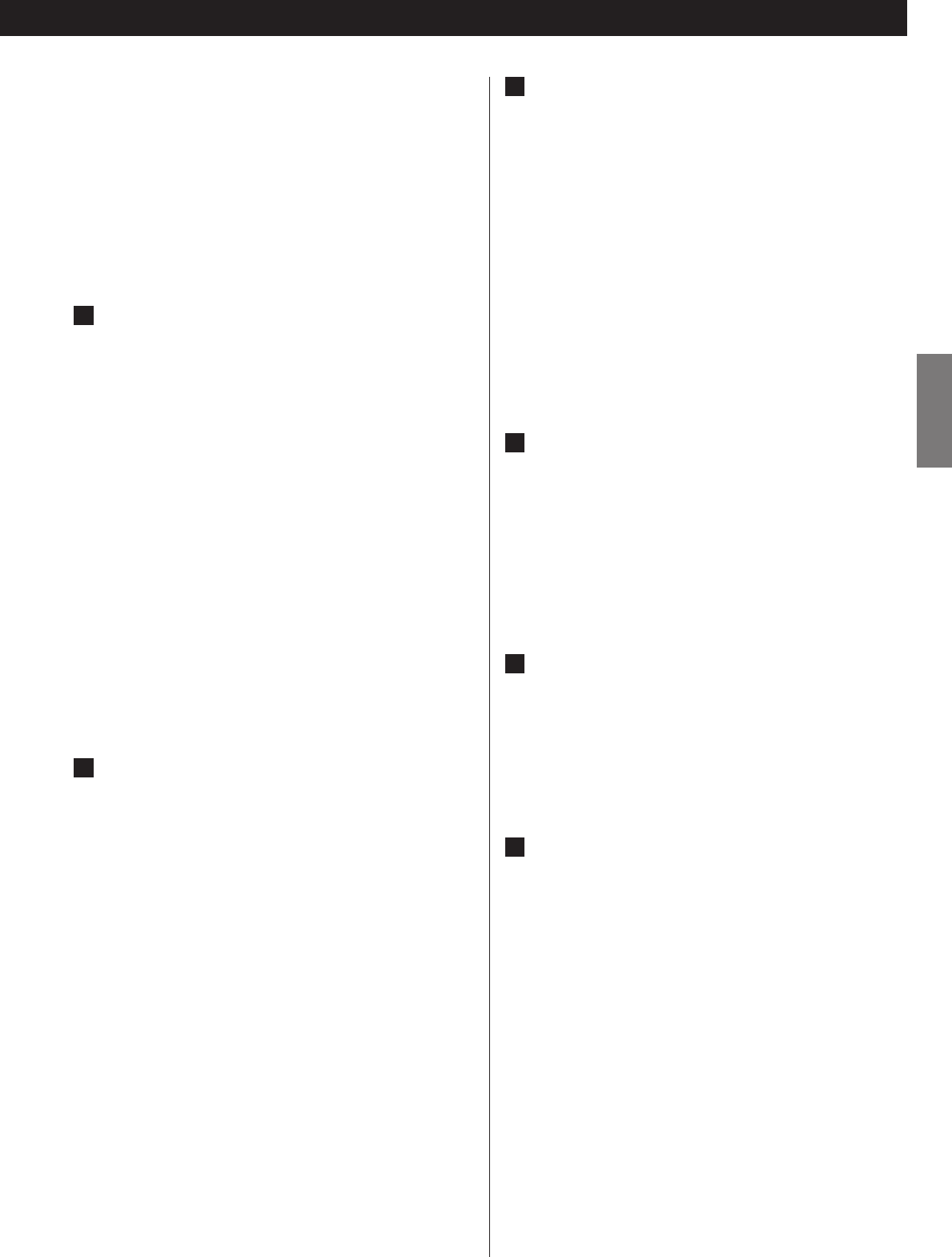
9
ENGLISH
Analog audio output terminals
2 channel (FRONT)
Use either the XLR or RCA (pin) FRONT terminals for analog
stereo output.
If your amplifier has balanced XLR analog audio inputs,
connect the XLR jacks on the unit to the amplifier’s XLR
jacks, otherwise use the RCA (pin) connections.
5.1 channel
For surround (5.1) amplifiers with analog inputs, also use the
RCA (pin) SURROUND pair, CENTER and SUBWOOFER
connections (in addition to the FRONT pair).
<
If you are connecting only 2 channels, use the 2CH/MULTI
button on the remote control to select “2 ch”. For surround
sound with six speakers connected, you can select either
“2ch” or “5.1 ch” mode. Note that if multi-channel
program material is played and 2-channel mode is selected,
the multi-channel material will be down mixed to two
channels, and output through the L and R front outputs.
Digital audio output terminals
Digital audio from CD is output from these terminals.
The unit may be connected using either coaxial or optical
(TOS) commercially available cables to amplifiers, or to
digital audio devices such as CD recorders, etc.
COAXIAL: Use RCA (pin) digital audio cable
OPTICAL: Use optical digital audio cable (TOS)
<
The optical terminal is covered by a shutter. Make sure that
the cable is firmly inserted, but do not force the cable when
connecting it or removing it, in order not to cause damage
to the unit.
<
The DIGITAL OUT terminals cannot output the digital audio
from Super Audio CDs.
B
A
i.LINK (AUDIO) terminal
In addition to the digital audio from CD, the digital surround
audio from Super Audio CDs can be output from this
terminal. To enjoy surround sound from a Super Audio CD,
connect the i.LINK (AUDIO) terminal to a suitably equipped
surround sound amplifier.
Use a commercially available S400 compatible i.LINK
(IEEE1394) 6pin cable to connect the unit to an amplifier.
<
When using this terminal, set the Digital Out to “ON”, and
the i.LINK output setting to “60958” or “PCM” (see pages
21, 16-18).
<
See page 24 for further details on i.LINK.
Word sync connector
This allows the use of an externally-generated word clock
connection, using a commercially available BNC coaxial
cable.
Devices producing such a suitable clock signal include
external D-A converters, or dedicated word clock
generators. Connect the SYNC OUT (or WORD OUT) of such
a device to the unit.
SIGNAL GND connection
Use a commercially available PVC-covered cord to connect
the signal ground terminal on the unit to the amplifier signal
ground.
<
Note that this is NOT an electrical safety ground (earth).
Power cord receptacle
Connect the power cord to the power cord receptacle and
connect the power plug to an AC wall outlet after all other
connections have been made.
<
Use only the supplied Esoteric power cord. Use of other
power cords may result in fire or electric shock. Unplug the
power cord when you are not going to use the unit for an
extended period of time.
F
E
D
C
CAUTION:
<
Switch off the power to all equipment before making
connection.
<
Read the instructions of each component you intend to use
with this unit.
<
Be sure to insert each plug securely. To prevent hum and
noise, avoid bundling the signal interconnection cables
together with the AC power cord or speaker cables.


















